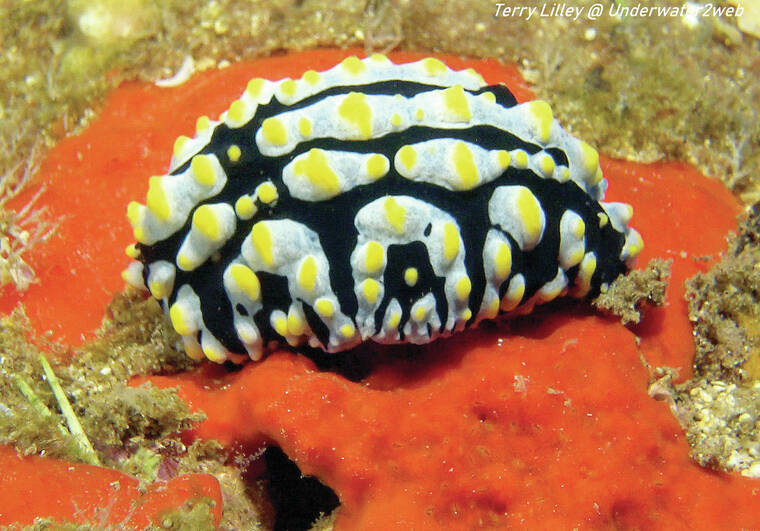Have you ever been out snorkeling or scuba diving and seen a super colorful nudibranch or sea slug slowly crawling across the reef?
Some divers travel all around the world just to take pictures of these stunning creatures that come in every color of the rainbow. Sea slugs seem to advertise their presence on the reef and they are so slow moving they could not hide or crawl away from a potential predator if they had to.
How do these creatures keep from being eaten? Most marine life species have to swim fast, have big teeth or blend into their background to escape from being eaten, but the sea slugs have developed a method to stay safe because of what they eat.
In the past sea sponges used to be harvested from the reef and cut up to be used for cleaning our kitchens. They are harmless to touch, but are highly poisonous if you eat one. Sea sponges filter toxins out of the sea water and help keep our oceans clean. They can build up an extreme amount of toxins in their tissue and this does not seem to create a problem for them.
That is why sea sponges can even live in polluted bays and harbors where most other critters would die. These sponges are being studied by scientists to see how they can digest toxins without getting sick and maybe they hold the key to helping people remain healthy in a toxic environment. Sponges are so toxic that almost nothing can eat them, except the sea slugs.
Varicose phyllidia nudibranch is a type of sea slug called a dorid. They grow to be about 3 inches long and are rough bodied with bright blue and yellow colors. They have no known predators and they are quite common out on the Hawaiian coral reefs.
It is best to find them in shady areas and if you look close they are often right on top of a sea sponge of which they eat. Nudibranchs all around the world feed on sponges and they concentrate the poisons from the sponge so they become poisonous themselves and nothing can eat them.
Nature is pretty amazing and many creatures on land and in the sea are very colorful and those bright colors may mean that they are poisonous and they often get their poison from what they eat. If an animal can digest a poisonous plant or sponge, they can get the nutrients they need to stay alive and also concentrate the poisons in their own bodies so nothing wants to eat them.
You can see lots of the colorful nudibranch in action eating sponges in my documentary movies about Hawaiian marine life up on my underwater educational YouTube channel at www.underwater2web.com.
•••
Terry Lilley is a marine biologist living in Hanalei Kaua‘i and co-founder of Reef Guardians Hawai‘i, a nonprofit on a mission to provide education and resources to protect the coral reef. To donate to Reef Guardians Hawaii go to www.reefguardianshawaii.org.


